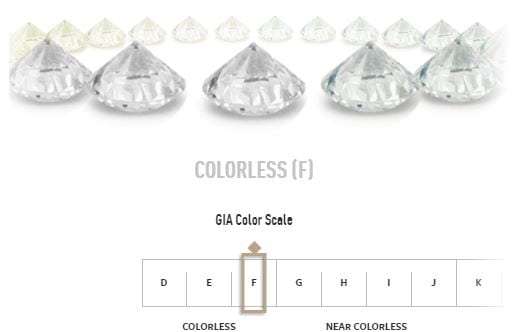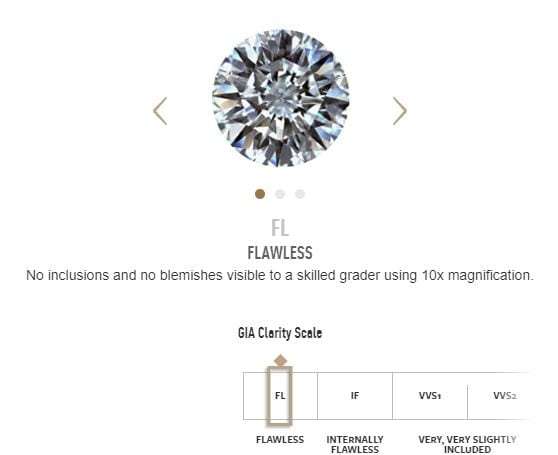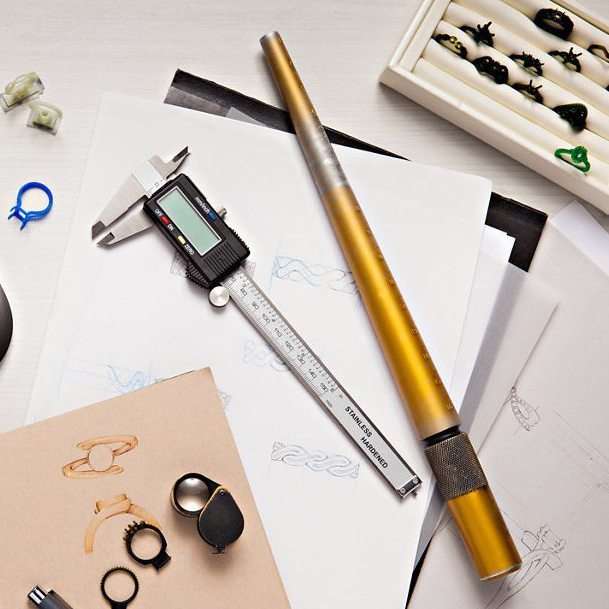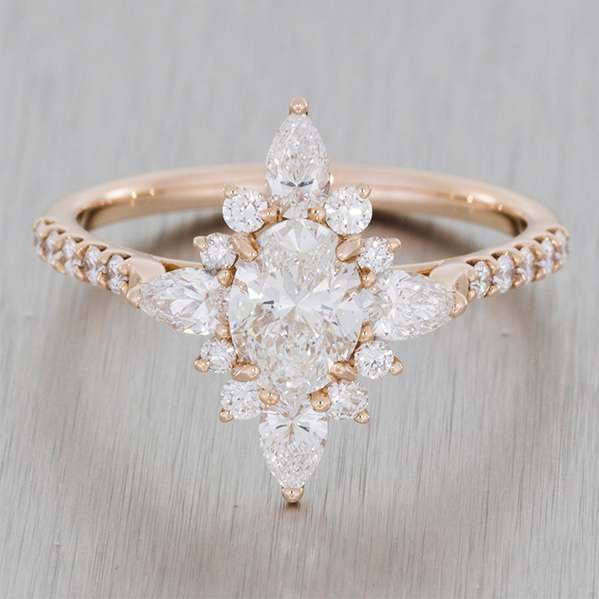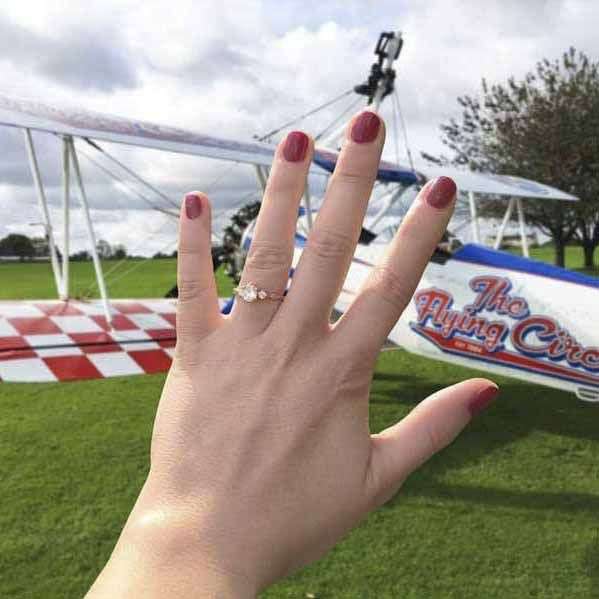Design your own
Selecting The Perfect Diamond
How To Choose Your Perfect Diamond
Choosing the perfect diamond can be somewhat of a daunting task and something that shouldn’t be rushed into. Unfortunately, even if you have done some research into the ‘The Four C’s’ there is so much conflicting information available that you may come away feeling more lost than when you started. Hopefully the following information we have collated for you, will stand you in good stead to choosing your forever stone.
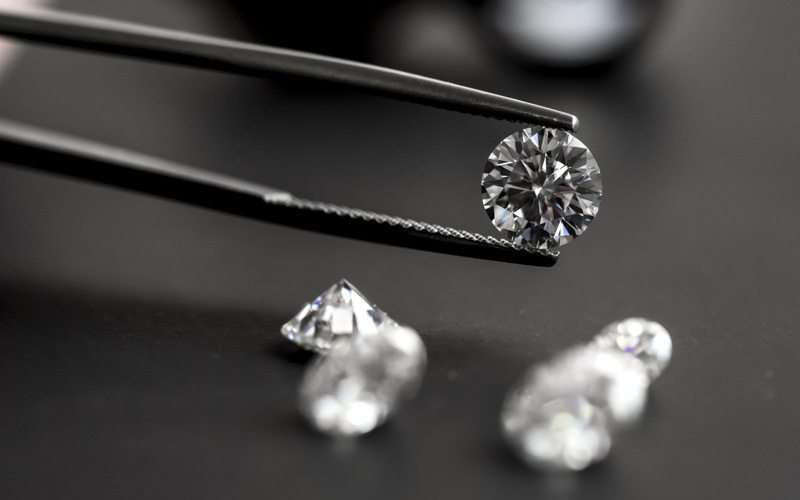
Choosing Your Criteria
The information given by jewellery professionals can alter significantly depending on who you speak to. High Street jewellers selling stock and carrying loose diamonds will have one primary concern and objective; to shift the stock they have. This is not to necessarily these diamonds will be of a lesser quality without certification, but the specifications of diamonds are so vast it’s hard to know what you are really buying.
We would recommend doing your own research and consider what the most important factor for you is when purchasing a diamond before going any further.
What is it the most important aspect to your diamond decision? Is it a case that size is the most important factor or is it the colour of the diamond? There are many contributing factors to consider in order to choose a diamond you are going to be happy with for a lifetime, that the largest aspect of choosing your perfect diamond is narrowing your criteria down.
The Four C’s
The majority of information surrounding diamonds is based on ‘The Four C’s. These consist of; Carat, Colour, Clarity and Cut.
Cut
Cut is often confused with the shape of the diamond, but these are two different things.
The shape of a diamond is just that, it is either round, oval, heart, marquise, and so the list continues. Cut is a combination of polish, symmetry and cut, which all contribute to the overall cut grade. Without the correct combination of proportions and angles, diamond can appear dull and lifeless.
There are two main families of cut; the ‘brilliant’ cut which means that the facets are variations of triangular and kite shaped which radiate from the centre and arranged in a way that optimises fire and sparkle. A popular example of this is the traditional round brilliant cut. Then there is ‘step’ cut which means the facets are rectangular and arranged in parallel lines to the girdle on the crown and pavilion. The emerald cut is the most popular type of step cut. To learn more about cut click read more below
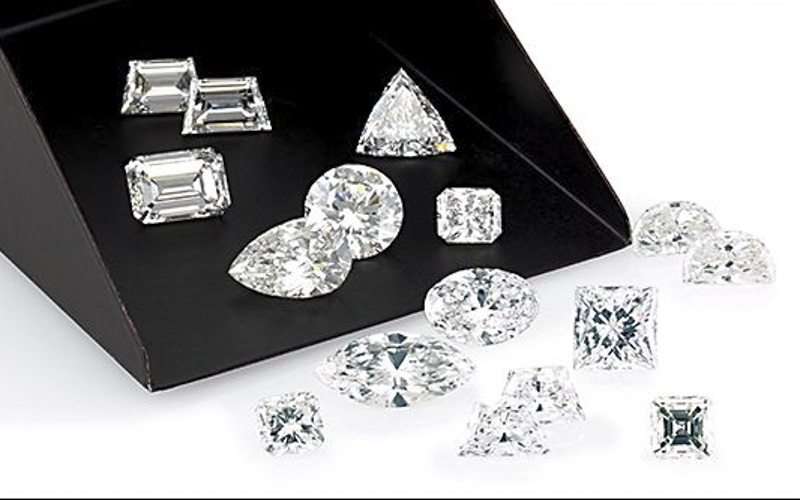
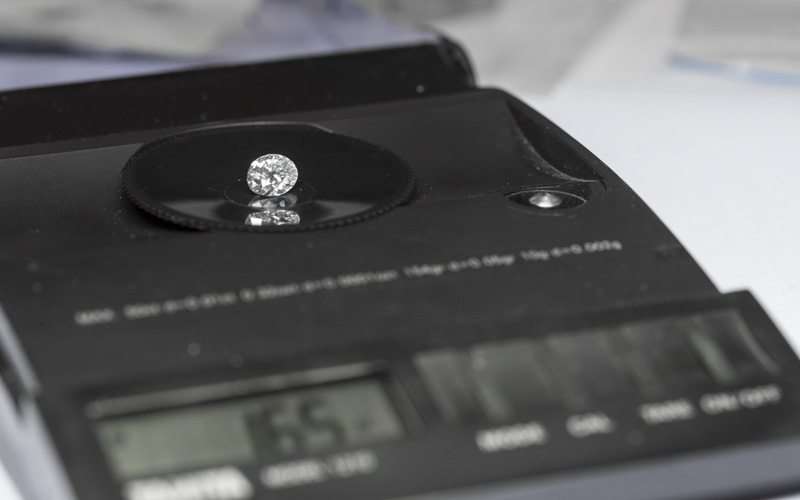
Carat
Carat is often confused with size but this is how much the diamond weighs. A metric carat is defined as 200 milligrams. You will also hear the term ‘points’ being used when referring to carat weight. Each carat is divided into 100 points which measures the stone to the hundredth decimal place. A 0.25 carat diamond can be referred to as a quarter of a carat, 25 points or a 25 pointer. As a diamond increases in size, the price also increases as it becomes more desirable, however it is a combination of all 4 cs that contribute to the price. To learn more about carat click read more below
Colour
When looking to purchase a diamond there is a lot of emphasis on the colour. The colour is graded by a diamond grading house using a master set of stones which it is compared against. The colour grading system starts at ‘D’ and goes down the alphabet. ‘D’ is classed as ‘colourless’ so it has no hue’s of yellow or brown, they are completely white. The difference between these colours is marginal, even to the trained eye. If you are Comparing a D colour to an H then it will be a more significant difference.
Another detail that is commonly overlooked when buying a diamond is the metal that it will be housed in. Some may believe a lower colour diamond will work better in a yellow gold mount so the contrast between the metal and the diamond is less. The diamond can also pick up the warmer reflections of the metal. To learn more about colour click read more below
Clarity
The clarity of a diamond refers to the natural inclusions within the stones which most diamonds have due to the extreme heat and pressure the diamonds indure whilst they are formed in the earth. These are the birthmarks of each individual diamond more commonly known as inclusions. If these inclusions are on the surface of a stone they are known as blemishes. The more obvious inclusions a stone has the less valuable it is and the more the brilliance of the diamond will be affected as these flaws interfere with light the diamond reflects.
When a trained diamond cutter is crafting the stone he makes every effort to make sure that the inclusions are not visible through the table of the finished stone. Ideally, the inclusion should be towards the outside of the stone or closer to the girdle so that they are harder to see. To learn more about clarity click read more below
“Selecting Your Perfect Stone; Choosing the perfect diamond can be somewhat of a daunting task and something that shouldn’t be rushed into. Please let our diamond experts assist you in helping you selecting your perfect stone.”
More Like This
Discover how our rings are more bespoke, use higher spec diamonds... but for a lower price
Independently rated 9.8/10 - read how we've made that special moment just that little bit extra special.
Get in touch with one of our incredible ring designers
Our team and their wealth of experience will seamlessly guide you through the design process and create a unique, one off timeless piece of jewellery.

Get in touch with one of our incredible ring designers
We've trodden the path hundreds of times before so whether you have a clear idea about your requirements or are just looking for more information, let us guide you seamlessly through the journey by getting in touch today.


